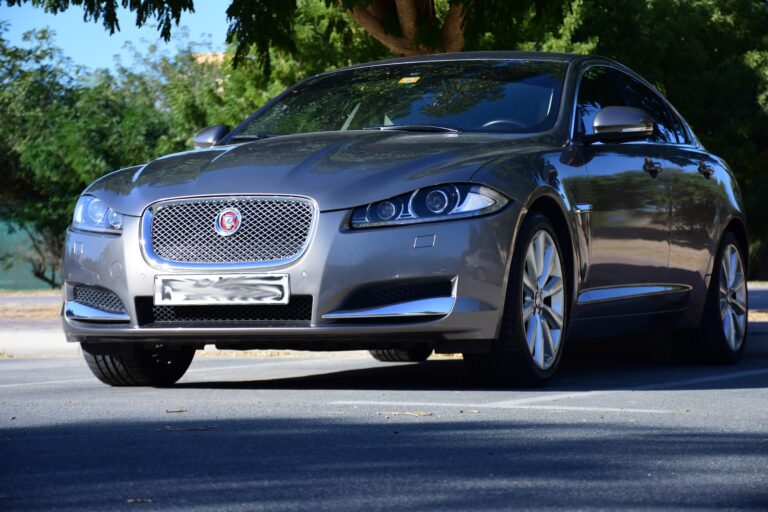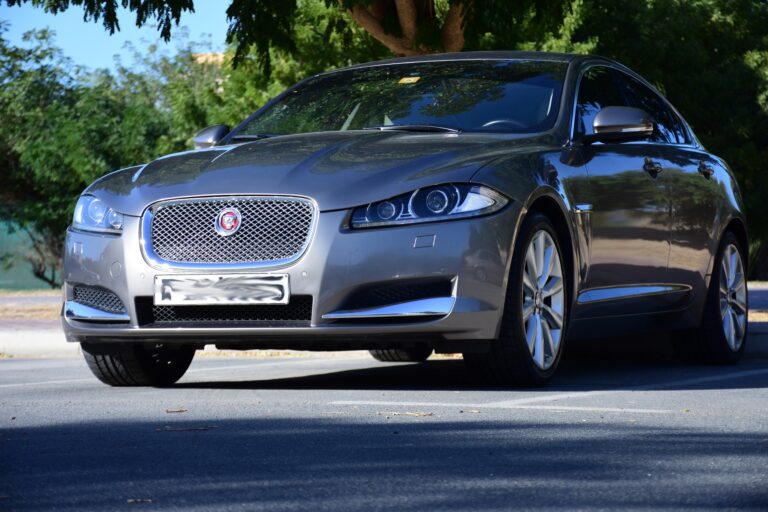Best Car Amp Brands: Powering Your Ultimate Car Audio Experience
Best Car Amp Brands: Powering Your Ultimate Car Audio Experience cars.truckstrend.com
In the realm of car audio, while a high-quality head unit and premium speakers lay a strong foundation, the true potential of your sound system often remains untapped without a crucial component: the car amplifier. Far more than just a volume booster, a car amplifier, or "amp," is the heart of a powerful and pristine audio setup, taking the low-level audio signal from your head unit and amplifying it to drive your speakers and subwoofers with clarity, power, and precision. Choosing the best car amp brands isn’t just about loudness; it’s about unlocking dynamic range, reducing distortion, and experiencing every nuance of your music as it was intended.
This comprehensive guide will delve into why an amplifier is indispensable, what to look for when selecting one, and crucially, highlight the top car amp brands renowned for their performance, reliability, and innovation. Whether you’re a casual listener looking for better bass or an audiophile seeking studio-quality sound on the road, understanding these brands and their offerings is your first step towards an unparalleled in-car listening experience.
Best Car Amp Brands: Powering Your Ultimate Car Audio Experience
Why a Car Amplifier is Essential for Superior Sound
Many factory-installed car stereos and even some aftermarket head units lack the power to properly drive today’s high-performance speakers. This deficiency often results in weak bass, distorted highs at higher volumes, and a general lack of dynamic range. This is where a dedicated car amplifier comes into play:
- Increased Power Output: Amps provide significantly more wattage than a head unit, allowing your speakers to operate at their full potential, producing louder, cleaner sound without strain.
- Reduced Distortion: By supplying ample power, an amp prevents speakers from "clipping" or distorting, especially at higher volumes, leading to much clearer audio reproduction.
- Enhanced Dynamic Range: You’ll hear the subtle soft passages as clearly as the booming crescendos, bringing your music to life with greater depth and impact.
- Improved Bass Response: Subwoofers, in particular, demand a lot of power. A dedicated mono or multi-channel amplifier ensures they receive the juice needed to produce deep, impactful, and articulate bass.
- Customization and Control: Many amplifiers come with built-in crossovers, bass boost, and gain controls, allowing you to fine-tune your sound system to your specific preferences and vehicle acoustics.

In essence, an amplifier transforms your car audio from merely audible to truly immersive, making it an indispensable upgrade for any serious car audio enthusiast.
Key Factors to Consider When Choosing a Car Amp
Before diving into specific brands, understanding the technical specifications and features of car amplifiers is crucial for making an informed decision.
- Power Output (RMS vs. Peak): Always focus on RMS (Root Mean Square) power, which represents the continuous power an amp can deliver. Peak power is a momentary burst and less relevant. Match the amplifier’s RMS output to your speakers’ RMS power handling for optimal performance and longevity.
- Channels:
- Mono (1-channel): Designed specifically for subwoofers.
- 2-channel: Ideal for powering a pair of full-range speakers or bridging to power a single subwoofer.
- 4-channel: Powers two pairs of full-range speakers (e.g., front and rear) or can be bridged to power a pair of subwoofers or a front stage plus a single subwoofer.
- 5-channel/6-channel: An all-in-one solution for powering all your full-range speakers and a subwoofer from a single unit.

- Amplifier Class (A/B, D):
- Class A/B: Known for excellent sound quality, but less efficient (generates more heat and draws more power). Good for full-range speakers.
- Class D: Highly efficient, compact, and runs cooler, making them ideal for high-power applications, especially subwoofers. Modern Class D amps also offer excellent sound quality for full-range.
- Frequency Response: The range of frequencies the amp can reproduce (e.g., 20Hz-20kHz). A wider range means more accurate sound reproduction.
- Signal-to-Noise Ratio (SNR): Measured in decibels (dB), a higher SNR indicates less background noise and a cleaner audio signal. Aim for 90dB or higher.
- Total Harmonic Distortion (THD): Represents the amount of distortion added to the audio signal. Lower THD (e.g., <0.1%) means cleaner sound.
- Input Sensitivity: Ensures the amp can properly receive the signal from your head unit without clipping or excessive noise.
- Crossovers: Built-in high-pass (HPF) and low-pass (LPF) filters are essential for directing specific frequencies to the appropriate speakers (e.g., low frequencies to subwoofers, high frequencies to tweeters).
- Size and Mounting: Consider the physical dimensions of the amplifier and where you plan to install it in your vehicle (under a seat, in the trunk, etc.), ensuring adequate ventilation.

Top Car Amp Brands: A Deep Dive
When it comes to the best car amp brands, several names consistently rise to the top, each with its unique strengths and specialties.
1. JL Audio
Reputation: Widely regarded as a premium brand, JL Audio is synonymous with high-fidelity sound and robust power. They are particularly famous for their subwoofer technology but produce equally impressive full-range amplifiers.
Known For: Exceptional sound quality, strong build, reliable performance, and innovative technology (like their NexD™ switching technology for Class D amps). Their amplifiers often deliver power exceeding their ratings.
Target Audience: Audiophiles and serious enthusiasts who prioritize sound quality, performance, and long-term reliability.
Popular Series: HD, XD, RD, JD series.
2. Rockford Fosgate
Reputation: A powerhouse in car audio, Rockford Fosgate has been a dominant force for decades, known for producing amplifiers that deliver raw, untamed power, especially for bass applications.
Known For: High power output, rugged build quality, "Punch" series amps (known for their iconic punchy bass), and reliable performance under demanding conditions. They often include advanced tuning features.
Target Audience: Bass heads, SPL competitors, and anyone looking for loud, impactful sound with great reliability.
Popular Series: Power, Punch, Prime series.
3. Kicker
Reputation: Kicker has carved out a niche as a highly popular brand, offering a compelling balance of power, sound quality, and value. They are particularly strong in the bass segment but also offer excellent full-range solutions.
Known For: "Livin’ Loud" philosophy, robust power delivery, compact designs, and user-friendly features. Kicker amps are known for their efficiency and ability to produce solid power from a small footprint.
Target Audience: Everyday listeners looking for a significant upgrade, as well as bass enthusiasts who want strong performance without breaking the bank.
Popular Series: IQ, KX, CX, DX series.
4. Alpine
Reputation: A long-standing leader in car audio, Alpine is celebrated for its clean, precise sound quality and cutting-edge technology. They offer a wide range of amplifiers, from compact digital models to high-power beasts.
Known For: Excellent sound reproduction, advanced processing features (like their RUX-KNOB.2 for remote bass control), reliability, and integration capabilities with their head units.
Target Audience: Those who value clear, detailed sound and seamless system integration, from casual listeners to discerning audiophiles.
Popular Series: X-Series, R-Series, S-Series, V-Power.
5. Pioneer
Reputation: A global electronics giant, Pioneer offers a vast array of car audio products, including amplifiers that combine good performance with competitive pricing.
Known For: Reliability, solid performance for the price, and a wide range of options to suit various needs and budgets. Pioneer amps often focus on compact designs and efficient power delivery.
Target Audience: Mainstream consumers looking for a reliable, feature-rich amplifier that offers a significant upgrade over factory systems without being overly specialized.
Popular Series: GM-D series (Class D digital amplifiers).
6. Audison / Hertz (Elettromedia Group)
Reputation: Hailing from Italy, Audison and its sister brand Hertz (both under Elettromedia) are highly regarded in the high-end audio segment. Audison focuses on ultimate sound quality, while Hertz offers a slightly more accessible but still premium performance.
Known For: Uncompromising sound fidelity, sophisticated engineering, advanced digital signal processing (DSP) integration, and a focus on detail and musicality.
Target Audience: Serious audiophiles and enthusiasts for whom sound quality is the absolute top priority, willing to invest in a premium experience.
Popular Series: Audison Voce, Thesis, AP (Audison Prima); Hertz HDP, Mille.
Installation Tips and Common Challenges
Proper installation is as crucial as choosing the right amplifier. Even the best amp can underperform if not installed correctly.
Tips:
- Wiring: Always use high-quality, appropriately gauged power and ground wires. The power wire should run directly from the battery (with an inline fuse near the battery) to the amp. The ground wire should be as short as possible and securely bolted to a clean, bare metal point on the vehicle’s chassis.
- Remote Turn-On: Connect the remote wire from your head unit to the amp to ensure it turns on and off with your stereo.
- RCA Cables: Use good quality shielded RCA cables to connect your head unit to the amp, minimizing noise interference.
- Mounting: Securely mount the amplifier in a location with adequate ventilation to prevent overheating. Avoid carpets or areas that trap heat.
- Gain Setting: This is critical. Set the gain correctly using a multimeter or an oscilloscope (or by ear carefully) to match the amp’s input sensitivity to your head unit’s output. Improper gain setting is a leading cause of distortion and blown speakers.
- Crossover Tuning: Properly set the high-pass and low-pass filters to direct appropriate frequencies to your speakers and subwoofers.
Common Challenges & Solutions:
- Engine Noise/Whine: Often caused by poor grounding. Ensure all ground points are clean and secure. Using a ground loop isolator can sometimes help.
- Overheating: Insufficient ventilation, improper gain setting, or an amplifier pushed beyond its limits. Check mounting, gain, and ensure the amp is matched to your speakers.
- Amp Goes into Protect Mode: This is a safety feature. It could be due to overheating, a short circuit in the wiring, speaker impedance mismatch, or low voltage. Troubleshoot wiring, speaker connections, and power supply.
- Insufficient Power: Using too small a gauge power wire or an underpowered amp. Upgrade wiring or consider a more powerful amplifier.
Maximizing Your Car Amp’s Performance
To truly get the most out of your amplifier, consider these aspects:
- System Matching: Ensure your speakers and subwoofer’s RMS power handling closely matches the amplifier’s RMS output.
- Power System Upgrade: For high-power systems (over 1000W RMS), consider upgrading your vehicle’s alternator, battery, or adding a capacitor to ensure stable power delivery.
- Sound Deadening: Applying sound deadening material to your doors and trunk can significantly improve bass response and overall clarity by reducing vibrations and rattles.
- Professional Tuning: For the best results, consider having a professional car audio installer tune your system with specialized equipment.
Price Table: Representative Car Amp Brands & Price Ranges
Please note: Prices are highly variable based on specific models, features, retailers, and current sales. This table provides a general range for typical offerings from these brands.
| Brand | Typical Amp Type(s) | RMS Power Range (approx.) | Key Feature / Known For | Price Range (USD) |
|---|---|---|---|---|
| JL Audio | Mono, 2-Ch, 4-Ch, 5-Ch | 200W – 1500W+ | High Fidelity, Robust Build, NexD™ | $$$$ (Premium) |
| Rockford Fosgate | Mono, 2-Ch, 4-Ch, 5-Ch | 300W – 2500W+ | Raw Power, Durability, "Punch" | $$$ (Mid-High) |
| Kicker | Mono, 2-Ch, 4-Ch, 5-Ch | 200W – 1800W+ | Balanced Performance, Compact | $$ (Mid-Range) |
| Alpine | Mono, 2-Ch, 4-Ch, 5-Ch | 150W – 1200W+ | Clean Sound, Tech Integration | $$$ (Mid-High) |
| Pioneer | Mono, 2-Ch, 4-Ch | 100W – 800W | Value, Reliability, Compact Class D | $ (Budget-Mid) |
| Audison / Hertz | Mono, 2-Ch, 4-Ch, DSP Amps | 75W – 1000W (per channel) | Ultimate Sound Quality, DSP | $$$$ (High-End) |
- $ (Budget-Mid): $100 – $250
- $$ (Mid-Range): $250 – $500
- $$$ (Mid-High): $500 – $800
- $$$$ (Premium): $800+
Frequently Asked Questions (FAQ)
Q1: Do I really need an amplifier if my head unit has decent power?
A1: Yes. Even head units with "50W x 4" ratings typically only output 15-20W RMS per channel. A dedicated amplifier provides significantly more clean RMS power, reducing distortion and allowing your speakers to perform optimally, especially at higher volumes.
Q2: What’s the difference between RMS and Peak power? Which one should I focus on?
A2: RMS (Root Mean Square) power is the continuous power an amplifier can output safely. Peak power is the maximum power an amp can produce for a very brief moment. Always focus on RMS power when matching an amp to your speakers or subwoofer.
Q3: Can I use a 2-channel amp for a subwoofer?
A3: Yes, most 2-channel amplifiers can be "bridged" to combine their power output into a single, more powerful mono channel, which is suitable for powering a single subwoofer. Ensure the amp is "bridgeable" and that the subwoofer’s impedance is compatible with the bridged load.
Q4: How do I know what size (power) amplifier I need?
A4: Match the amplifier’s RMS output to the RMS power handling of your speakers and/or subwoofer. If you have 100W RMS speakers, aim for an amp that delivers around 100W RMS per channel. For a 500W RMS subwoofer, get a mono amp that delivers 500W RMS at the subwoofer’s impedance.
Q5: Where should I mount my car amp?
A5: Common locations include under a seat (ensure adequate clearance and ventilation), in the trunk (on the back of a seat, side panel, or on a custom amp rack), or in a spare tire well. Always ensure it’s securely mounted and has proper airflow to prevent overheating.
Q6: Why is my amplifier getting hot?
A6: Some heat is normal, especially with Class A/B amps. Excessive heat can be due to:
- Improper gain setting (too high, causing clipping).
- Insufficient ventilation.
- Amp being underpowered for the speakers/subwoofer (working too hard).
- Impedance mismatch (speakers’ impedance is too low for the amp).
- Poor grounding or power wiring.
Q7: Should I install my car amp myself or get it professionally done?
A7: If you have experience with car electronics, understand wiring diagrams, and are comfortable with basic tools, you can DIY. However, for optimal performance, safety, and to avoid potential damage, professional installation is highly recommended, especially for complex systems.
Conclusion
Choosing the "best" car amp brand ultimately depends on your specific needs, budget, and desired sound signature. Whether you prioritize raw power for thumping bass, pristine clarity for intricate musical details, or a balanced all-around performer, there’s a brand out there to meet your demands. By understanding the key technical factors, exploring the strengths of leading brands like JL Audio, Rockford Fosgate, Kicker, Alpine, Pioneer, and Audison, and adhering to proper installation and tuning practices, you can transform your car’s audio system from mundane to magnificent. Invest wisely, and prepare to experience your favorite music on the road like never before.





